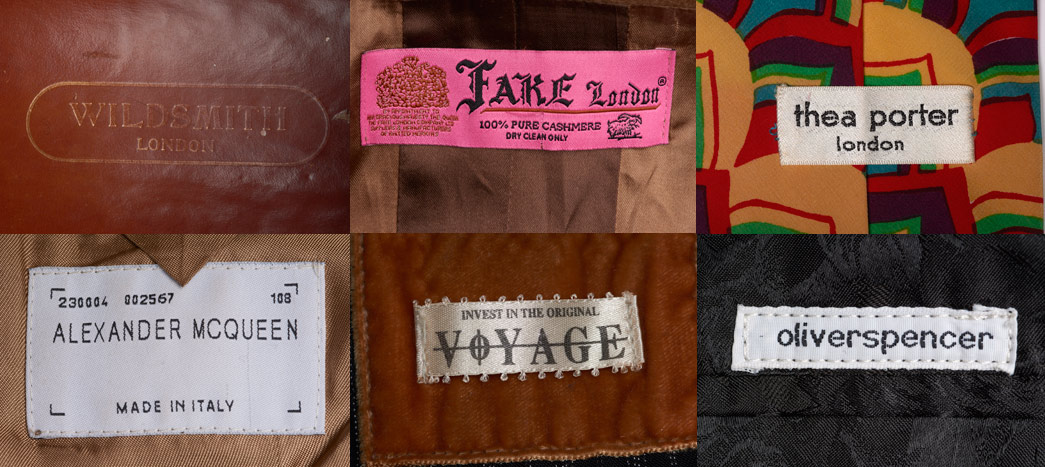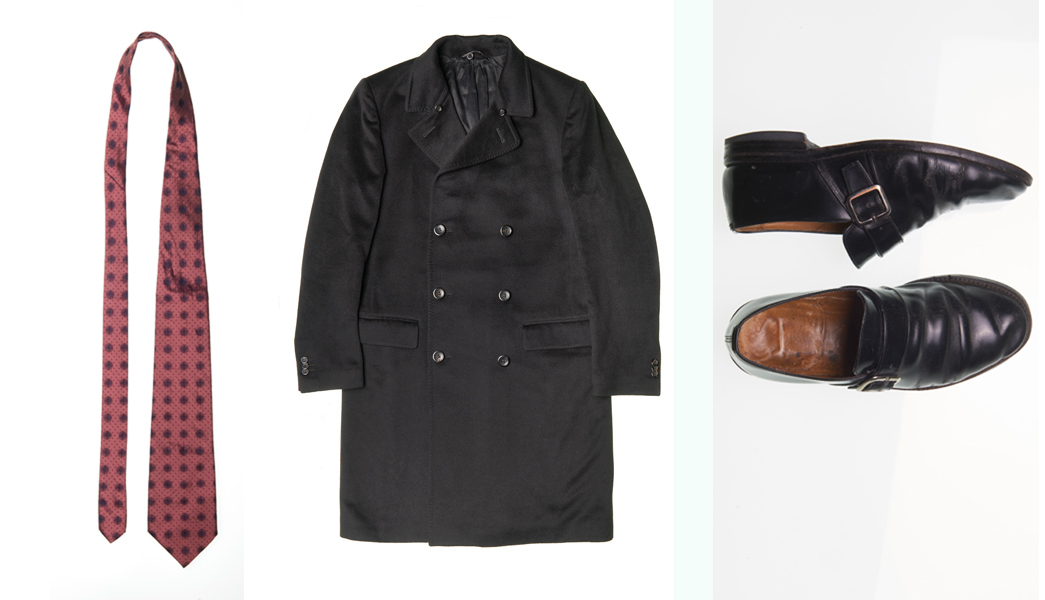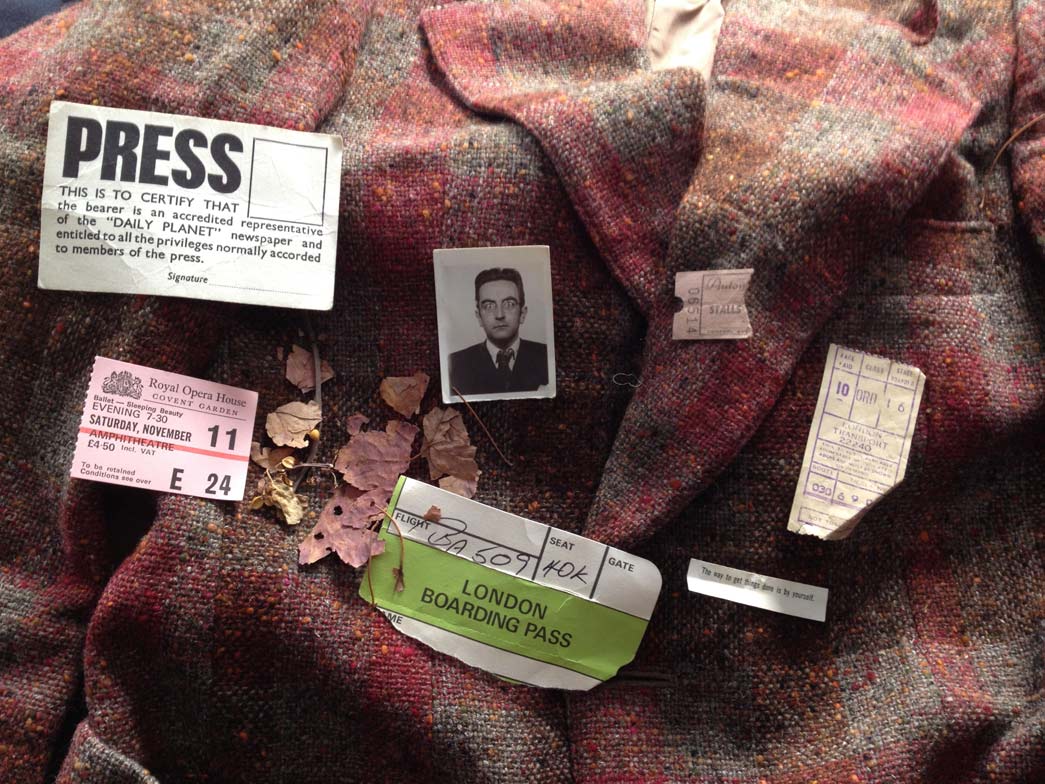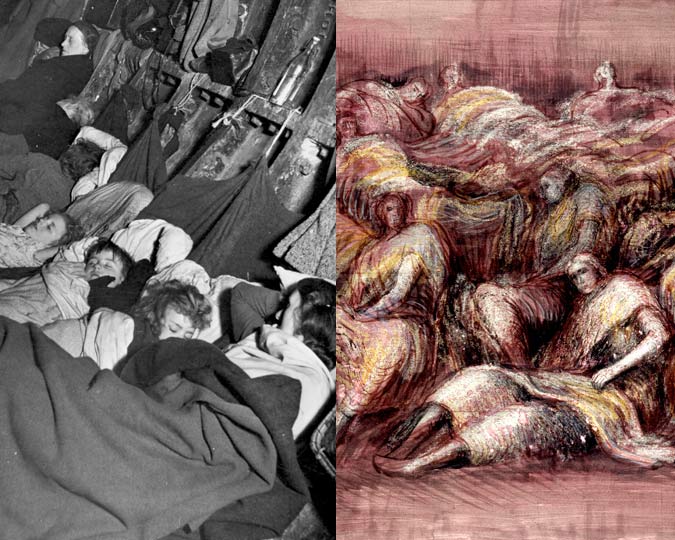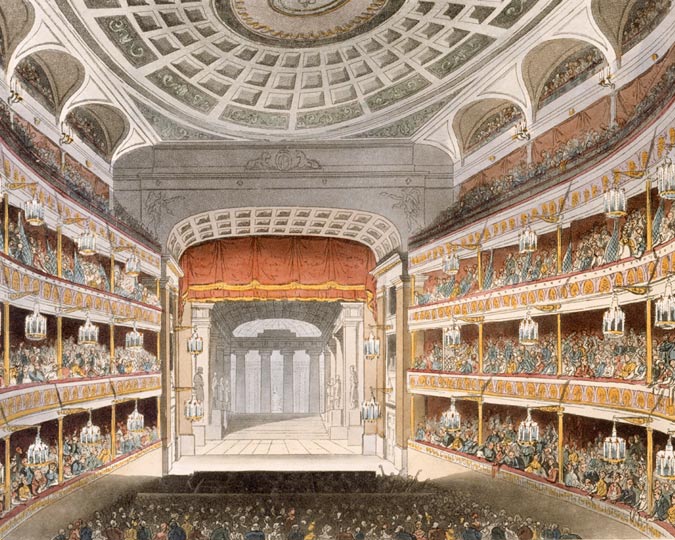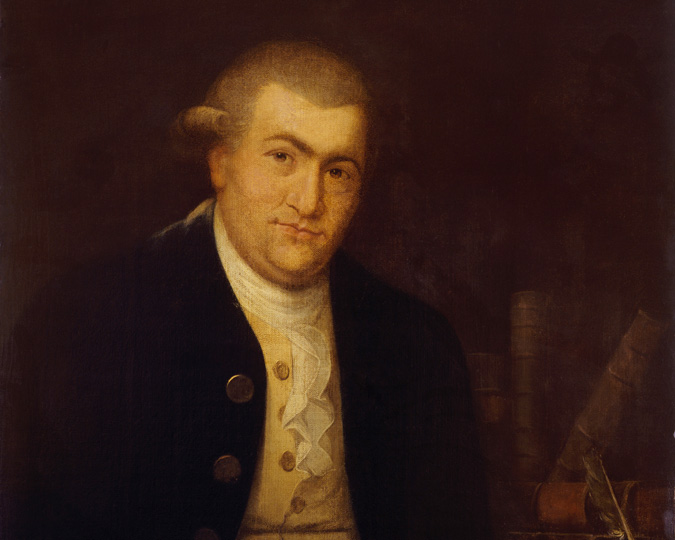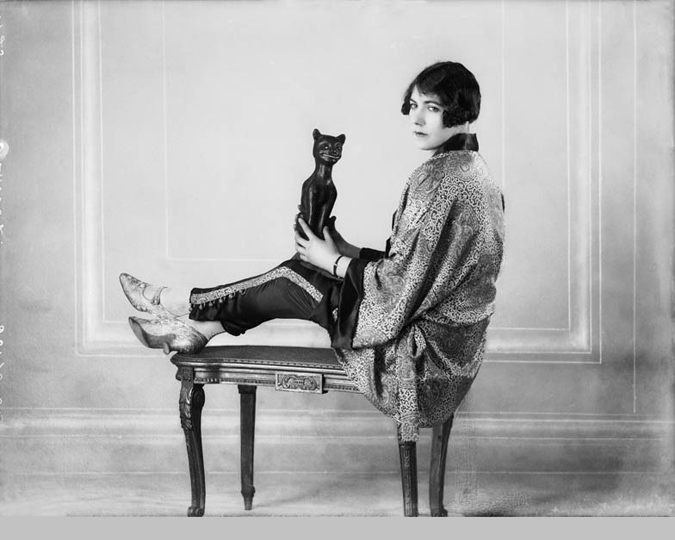The Museum of London's May 2017 Show Space display, Francis Golding: a sartorial biography, celebrated the life and wardrobe of a London fashion icon and charted the changes in the city's style over the last 40 years.
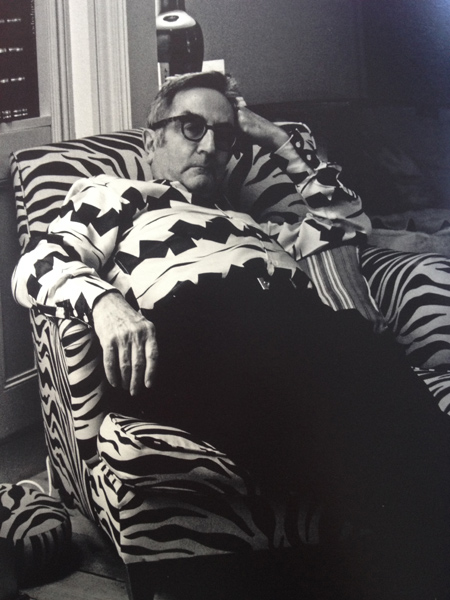
Francis Golding
In 2016, the Museum of London acquired a collection of men’s clothing and accessories worn by Francis Golding. Francis was a leading architectural, planning and conservation consultant, who influenced the look of modern London. Francis suffered an untimely death from injuries sustained in a cycling accident in central London on 5 November 2013. The contents of his Georgian townhouse in Islington, where he lived for 30 years, remained virtually undisturbed for two years, until the Museum of London was invited to assess his collection for acquisition.
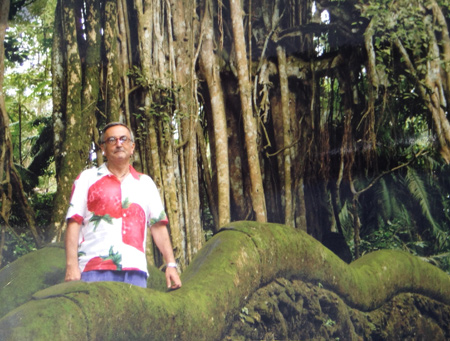
Francis in Angkor Wat in 1993
The Dolce & Gabbana shirt Francis wears is now in the Museum of London collection. ID nos. 2016/23a & 2016/23b
Known for his style, Francis was described as ‘dapper without being precious, a true English dandy when that word respectfully described someone whose attention to details produced an interesting appearance and a distinguished behaviour that were achieved apparently effortlessly’. He regularly purchased clothing from London designers and tailors, such as Thea Porter, Malcolm Levene, Voyage, Wildsmith, Fake London, Nigel Hall and Oliver Spencer. None of these designers had previously been acquired in the menswear collection at the Museum of London.
In addition to the contemporary clothing that Francis had been wearing up to the time of his death, he had also preserved numerous items from key moments in his life dating back to his childhood. He also collected and wore 19th century items, some of which were worn by his ancestors and passed down to Francis, while others were vintage purchases mixed into his wardrobe.
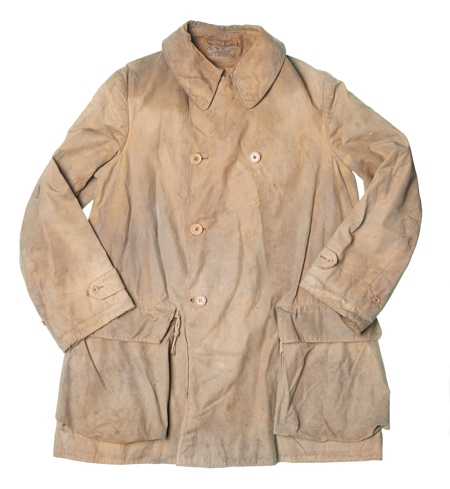
Trench coat by Aquascutum
Early 20th century; ID no. 2016.40/1
Carefully selected from this large collection, the Museum of London has acquired 100 items, including 13 ensembles plus 34 separate pieces recording key moments in Francis’s life, from the mid-1960s, when he first moved to London, to items worn shortly before his death in 2013. The selected items include: an early 20th century trench coat by Aquascutum, which Francis wore throughout his adult life, but was originally his father’s; a tailored jacket for his first job as a civil servant; flamboyant examples from the late 1960s and ‘70s, when Francis was coming to terms with his sexuality; ensembles showing his experimental approach towards more formal menswear connected to his impressive career; clothing items from around the world purchased during his travels; and even the suits worn by Francis and his partner for their civil partnership ceremony—a first for the Museum of London’s fashion collection.
The Francis Golding collection is significant on a number of levels: firstly, it offers an insight into the biography of a Londoner in a creative and engaging way, as each item tells a different story about an aspect of the owner’s life and experiences.
It also provides important examples of London designers and tailors. Of the 35 designers labels acquired, 18 are from London designers, tailors and cobblers that were not previously featured in the Museum of London’s fashion collection. It therefore fills in many gaps in the contemporary menswear collection.
Many of the items are described and discussed in Francis’s own papers, letters and photographs, copies of which have also been acquired. Staff from the museum worked closely with Francis’s widower and the donor of the collection, Dr Satish Padiyar. Through this close collaboration, the provenance on each item was recorded, including, for many items, an image of Francis wearing the garment.
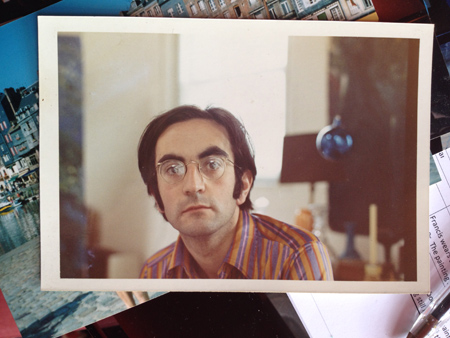
Francis around 1967, when he first moved to London
The striped shirt Francis wears is now in the Museum of London collection. ID no. 2016.40/10
Additionally, Francis left clues in many of the pockets of the collected items, which offer exciting information as to where and when the items were worn. These clues come from crumpled theatre and train tickets, some from decades apart, yet found in the same pocket. Other clues come from dated pamphlets Francis picked up on trips to places like London’s Kew Gardens or Penrhyn Castle in Wales. While many connections can already be made between the garments and their collected provenance, ephemera and images, the extraordinary amount of information contained in this collection will no doubt provide future students, scholars, and aficionados of fashion and cultural history with discoveries to be made for years to come.
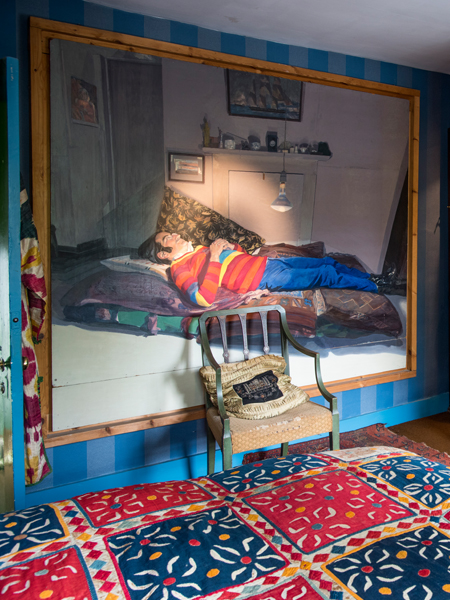
Still life
Picture taken in the home of the late Francis Golding.
Francis's wardrobe represents a collection of recognised importance. Following the acquisition of items by the Museum of London, other museums and archives were also contacted. The London College of Fashion acquired no less than 185 individual items for their archive.
In an attempt to appropriately record the space in which Francis lived, a photographer from the Museum of London was brought to his home to capture images of the house as it was before his collection was dispersed. The day after the photographs were taken, the items acquired by the Museum of London were removed from the home, along with Francis’s collection of Chinese ceramics, which formed nearly 70 lots in a Christie’s auction in November 2015.
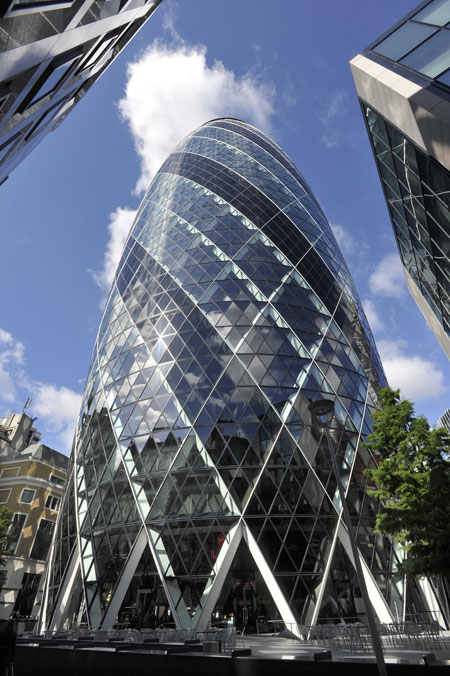
30 St Mary Axe, also known as the Gherkin
Francis worked as an architectural consultant on the construction of many of London's most spectacular new buildings.
Francis Golding: a London life
Born in Macclesfield in 1944, Francis received his degree from Cambridge in 1966, moved to London the following year, and became a Civil Servant for the Ministry of Public Buildings (later known as the Department of the Environment (DOE)), in 1970. From 1975-77 he worked on the Royal Commission on the Press and in 1976 became Assistant Secretary at the DOE; he was particularly proud of his role in the creation of the 1977 Rent Act. Francis was instrumental in the development of English Heritage (now Historic England and English Heritage Trust), joining the group in 1984 and then from 1986-90 was their Head of Properties. From 1992-94 Francis was the Secretary of the International Committee on Monuments and Sites and became Secretary of the Royal Fine Arts Commission in 1995 and later, in 1999, became First Secretary of the Commission for Architecture and the Build Environment.
From 2000, to his death in 2013, Francis Golding was an independent consultant for several high-profile architectural projects in London, including Norman Foster’s ‘Gherkin’, Jean Nouvel‘s ‘One New Change’, Rogers Stirk's ‘Chelsea Barracks’ and ‘Neo Bankside’, Rafael Vinoly’s ‘Walkie Talkie’ and the British Museum World Conservation Centre. Due to Francis’s involvement in the development of the Walkie Talkie (20 Fenchurch Street), the ‘Sky Garden’ located on the top floor of the building is named The Francis Golding Terrace in his honour.
Love fashion? Subscribe to our free fashion newsletter to read more stories from our collections, and see upcoming events and exhibitions.








